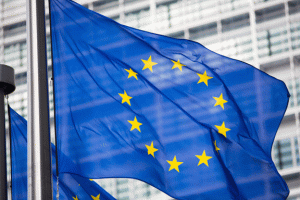European Safeguards Go Into Effect to Combat Diverted Steel
Announced by the European Commission yesterday, provisional steel safeguard measures went into effect today, covering 23 steel product categories.
Need buying strategies for steel? Try two free months of MetalMiner’s Outlook
The measures were instituted in response to a challenge about which European leaders have frequently expressed concern: diverted steel as a result of the U.S.’s Section 232 steel tariff.
The provisional measures can only remain in place for a maximum of 200 days. After review, the European Commission will decide by early 2019 if permanent measures are needed.
“There are already indications that, as a consequence, steel suppliers have diverted some of their exports from the US to the EU,” the European Commission release states. “In order to avoid a sudden increase of imports that would cause further economic problems for EU steel producers – who are already suffering from global overcapacity – the Commission considers that provisional safeguard measures are necessary and justified.”
A 25% quota will be imposed on products from each of the 23 categories once imports have exceeded the previous three-year average.
Members of the European Economic Area (EEA) — including Norway, Iceland and Liechtenstein — are exempted from the measures, in addition to “some developing countries with limited exports to the EU.”
E.U. Trade Commissioner Cecilia Malmström emphasized that the U.S.’s steel tariff has left Europe with no choice but to act.
“The US tariffs on steel products are causing trade diversion, which may result in serious harm to EU steelmakers and workers in this industry,” Malmström said in a prepared statement. “We are left with no other choice than to introduce provisional safeguard measures to protect our domestic industry against a surge of imports. These measures nevertheless ensure that the EU market remains open, and will maintain traditional trade flows.
Benchmark your current cold rolled coil sheet prices and see how it compares to the market
“I am convinced that they strike the right balance between the interest of EU producers and users of steel, like the automotive industry and the construction sector, who rely on imports. We will continue to monitor steel imports in order to take a final decision by early next year, at the latest.”
Axel Eggert, director general of the European Steel Association, offered praise for the institution of the safeguard measures.
“The Commission has received overwhelming support for this vital safeguard measure from both member states and business,” Eggert said in a prepared statement. “The measure will go someway to ensuring the continued stability of the internal market for steel and ensure that EU steel producers do not suffer extreme surges of imports of steel deflected away from the now constricted US market.”



Leave a Reply